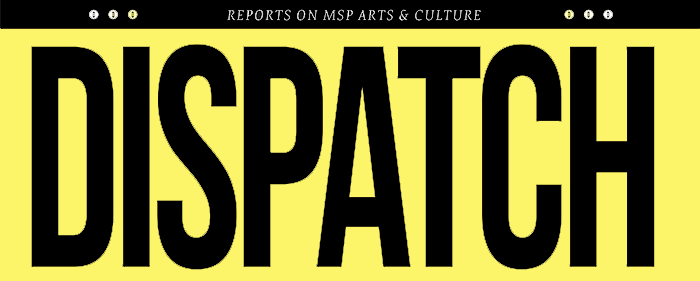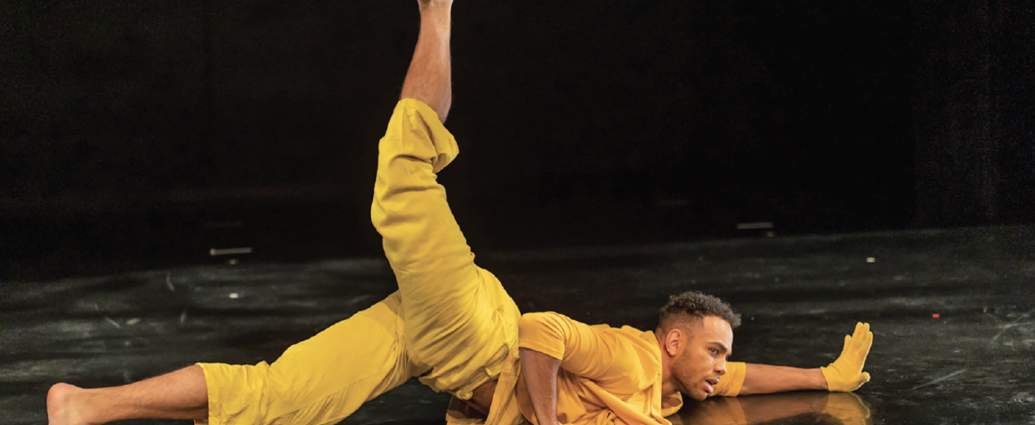WORDS BY ISABELLE WATTENBERG
• • •
The CANDY BOX Dance Festival, presented by ARENA DANCES, celebrates the vast diversity and imaginativeness of dance—think of it like a Whitman’s Sampler of dance. The event features a week of master classes, and performances by eight dancers representing a variety of experience levels and styles. It’s all hosted at the iconic Southern Theater, where an austere, industrial backdrop frames the historic stage.
One of the festival’s focuses is that it gives artists—particularly those just starting out—resources to perform on a stage and to an audience that they may not otherwise have access to. The festival’s happy hour shows do just that—presenting the works of five emerging artists.
“I think that it’s typically difficult for artists to produce things just because they want to, because it’s expensive to rent space,” says Lily Conforti, happy hour artist and founder of the Corpus Callosum Dance Project. “It’s really nice that organizations like ARENA are creating platforms to get new and emerging artists through financial barriers.”
Conforti’s piece, By the Skin Of Our Sleeves, explores the human senses—specifically, how they shape experience and can be manipulated.
“I wanted to play around with and start exploring certain sensory perceptions and how isolating our senses—seeing, touching, hearing—kind of influence the lens that we see the world through,” she says. “We [dancers] have these headlamps and that’s a way that you can highlight different parts of the body and you can kind of direct the audience’s eye to what you want to see, kind of curating that.”
Conforti said she appreciates how CANDY BOX fosters community between artists with varying degrees of experience. This outcome, says ARENA Founder and Artistic Director Mathew Janczewski, is crucial to sustaining and strengthening the dance community. When he started out as a dancer, he struggled to get stage time or even understand what resources, such as grants and other funding opportunities, were available. Now, as an established and well-connected artist, he hopes to smooth the path for other artists.
“This is a platform that allows Lily or Cheng [Xiong] to say, ‘Hey, I have this piece, when I apply for grants, I can supply this video,’” Janczewski says. “It gives a little clout, being presented at the [Southern] Theater, so it’s adding those ducks in a row to showing these people are serious. It opens the door to grant opportunities or commissions in that way. It’s the ability to be seen.”
Helping dancers be seen—by each other, audiences, and funders alike—is core to ARENA’s mission. In addition to hosting the CANDY BOX festival, ARENA organizes community potlucks called Floorwork, where dancers can voice needs and resources. This year’s CANDY BOX will also welcome J’Sun Howard, a Chicago–based dancer. Janczewksi hopes this will cross-pollinate dancer communities, giving both Chicago and Twin Cities performers the chance to form connections and see
different types of art being produced.
The festival’s eight artists exhibit a vast variety of dance forms and explore an array of topics through movement, including internal battles, personal growth, media, politics, and more.
Happy hour artist Javan Mngrezzo’s piece was inspired by a dream he had that preys on some of his very human fears about living in self doubt.
“I had this very vivid dream… and it loosely stems from imposter syndrome, but this idea that people you love—in dreams anyway—can hold you back because you’re scared to sever ties with them,” he said. “[In real life] the people I love wouldn’t do that to me, but there’s this questioning of how sincere are any of the relationships in my life.”
Mngrezzo’s performance presents half of what will be a longer work that addresses these fears and evolves into restorative resolution. He noted that while what we see at the festival may end on a down note, he sees it ultimately ending in hope and relief.
Cheng Xiong, who joins Mngrezzo on Tuesday’s happy hour bill, is presenting his first professionally choreographed and performed piece. Xiong began street dancing in high school, earned a dance degree at the U of M, and currently performs and teaches breakdance at Cypher Side Dance School.
“What’s making it even more exciting is the fact that Mathew saw my public pulses and my public work that I’ve been still trying to promote myself—not as a choreographer per se, but a movement generator. And Mathew felt like this is a great time to use this platform and express my work even more.”
Xiong’s piece was conceived the way his choreography often is—he discovered an inspiring piece of music and built the dance from that foundation. He’ll perform with fellow dancer Ian Smith, with whom he frequently collaborates and calls “My other half, my other personality…another version of me.”
“This choreography became about myself, wanting to come out and be someone,” he says. “There are other things that stopped me from being that, and also that I’m uncertain and scared and I don’t make that initiation of choosing who I want to be. The piece focuses on that growth and that change,” he says.
Megan Mayer, one of the festival’s three featured artists, has been dancing for more than 35 years. She also spoke about the growth her piece explores. This is the first time she’ll premier work since the pandemic hit. Mayer is debuting two pieces: A solo and a duet, and she says that although they were choreographed “in separate times and separate contexts,” they have a lot of similar themes.
“The pandemic was—is—a long interruption and changed dance in so many ways, and changed my relationship to dance, so this was a really lovely opportunity to get to share something in a space I’m familiar with,” she says.
Mayer’s experiences highlight the challenges that even seasoned dancers experience. The pandemic didn’t just stymie her creativity, it stifled opportunities to create and perform in ways that continue to be felt.
“In a way it’s almost like playing hard-to-get with the theater space,” she says. “It was such a dark, frustrating time. Performance spaces are at a real minimum to begin with, particularly for dance.”
Janczewski said he noticed signs of the decline even before the pandemic. For example, the shuttering of Zenon Dance Company in 2019—citing lack of funding—is emblematic of the larger obstacles dancers in the Twin Cities face.
“Losing Zenon was a big hit to the community, and the sustainability of being a dancer and a choreographer—the struggle is real,” he says. “There’s a little bit of a sense in my mind that we need to retain the old-school idea that this is a company and [members] get paid for their time.” This structure—approaching dance as full time employment—he explained, emphasizes the value of the dancer’s artistic contribution and allows them to focus on creating.
In our interviews, Janczewski and Mayer both called for more arts funding—and encouraged audiences to be curious about dance, even if they don’t know what to expect. Even amid this uncertain and insatiable environment, it’s clear that Janczewski and ARENA DANCES’ efforts are doing exactly what they intend—freeing up dancers to create.
“This is going to be my first professionally made, choreographed piece. I chose the piece and it’s very fueled by the ideas that I have,” Mngrezzo says. “Performing on a stage, like the Southern Theater, it can feel distant and intangible. As individual artists we don’t have as much of a reach … For someone who’s emerging, it’s a nice way of wading into the shallows of the monster that is creating work. If ARENA weren’t providing this, I don’t know that I’d be creating work at all.”
WHEN YOU GO
7th Annual CANDY BOX
Southern Theater, April 24-29
1420 Washington Ave. S., Mpls.
arena-dances.org
Master Classes:
Weekdays, 4-5:15 PM
Happy Hour Artists:
Weekdays, 5:30-6:30 PM
Featured Performers:
April 27-April 29, various times
For more: Mathew Janczewski’s podcast Studio Series, exploring the Twin Cities dance community.

